Cobertura Reciente en los Medios
Healthcare Heroes: Honoring all of Those Working to Save Lives
In our line of work within the healthcare industry, we have always been thankful for healthcare workers and their passion and dedication to help others and save lives. Now, amidst these challenging times, we have even more respect and gratitude for what they do every day.
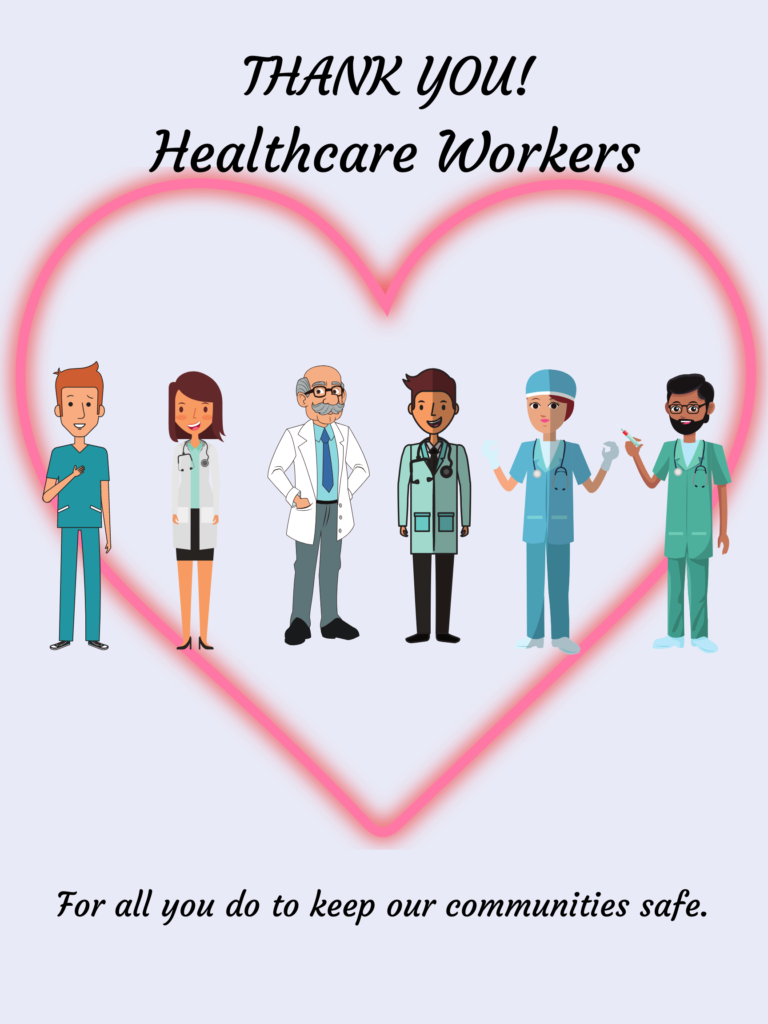 They are working tirelessly on the front lines, even when that means putting themselves in harms ways, and for some, staying away from their own families. While it seems like there are not enough words to thank them, we pause today to recognize and honor all the healthcare heroes in Colorado and Wyoming for their commitment to keeping our communities safe and healthy.
They are working tirelessly on the front lines, even when that means putting themselves in harms ways, and for some, staying away from their own families. While it seems like there are not enough words to thank them, we pause today to recognize and honor all the healthcare heroes in Colorado and Wyoming for their commitment to keeping our communities safe and healthy.
Acts of kindness performed in honor of others
During the last few weeks, we have seen Coloradans and Wyomingites performing acts of kindness for others and extending a helping hand knowing that we need it now more than ever. We were overwhelmed by all the acts of kindness and appreciation shown for healthcare workers in local communities. We know that Colorado and Wyoming are two of the most giving states when it comes to signing up to be an organ, eye and tissue donor. And, we discovered last month that this giving spirit extends to honoring and thanking our local healthcare workers for all they do. From howling at 8pm each night, to delivering lunches, to making masks, and chalking hospital sidewalks, the acts of kindness were creative, heartfelt and inspiring to many healthcare workers.
“I love seeing all the support for my fellow nurses, healthcare workers, Thank you all so much. Keep it up. It raises our spirits in a time of chaos.” Said a nurse from Wyoming about the howling that takes place in her community every night.
Before, during and after the current COVID-19 pandemic, donation and transplantation healthcare workers, including Donor Alliance staff, continue to fight to save lives in another public health crisis. The need for a lifesaving organ transplants affect nearly 113,000 Americans currently on the waiting list and there are thousands more in need of healing tissue and cornea transplants that enable them to live full lives.
We invite you to join us in saying thank you to all the healthcare heroes. Here a few ways to share your gratitude:
- Recognizing healthcare workers on social media: Do you have a special healthcare worker in your life? Tag them on social media and surprise him/her with a special message of appreciation or share a note thanking all healthcare workers for all they do.
- Reach out and offer to help: Make a list of people you know who work on the healthcare frontlines and offer help. They might need help shopping for groceries during stores new pandemic hours, picking up mail or watching/walking their pets.
- Celebrate National Nurses Week (May 6-12) by tagging a nurse: Follow Donate Life Colorado or Donate Life Wyoming on Facebook and on May 6, we will post a recognition of National Nurses Day. You will have 24 hours to tag a special nurse in your life in the comments of that post. Then we will surprise your nominated nurse with a little gift of gratitude!
To all the healthcare workers, those heroes that work around the clock to save our brothers, mothers, fathers, sisters, grandfathers and friends: THANK YOU. We recognize and honor all the work you do, today and always.
Learn more about organ, eye and tissue donation at DonateLifeColorado.org or DonateLifeWyoming.org. We invite you to consider signing up to be an organ eye and tissue donor in honor of a special healthcare professional in your life.
“They may forget your name, but they will never forget how you made them feel.”
~ Maya Angelou
El Coronavirus (COVID-19) y la Donación y los trasplantes de Órganos, Ojos y Tejidos: Información y Recursos
El Coronavirus (COVID-19) y la Donación y los trasplantes de Órganos, Ojos y Tejidos
Con las crecientes preocupaciones con respecto al brote del coronavirus (COVID-19), muchos residentes tienen preguntas sobre el impacto que tienen en la donación y el trasplante de órganos y tejidos. Para ayudar a ofrecer información y orientación, a continuación, tenemos información clave de nuestra área así como recursos adicionales. Publicaremos actualizaciones continuamente en esta página a medida que evoluciona esta crisis.
La Lista de Espera No Puede Esperar: Donor Alliance Continua con su Mision de Salvar Vidas
Actualizado el 18 de mayo
La misión de Donor Alliance es salvar vidas a través de la donación de órganos y tejidos y los trasplantes. Con cerca de 2,000 personas, incluyendo 500 hispanos, en nuestra comunidad esperando un trasplante que les salve la vida, la necesidad de órganos trasplantables es una crisis de salud pública en curso.
Estamos trabajando activamente para planificar y mitigar cualquier impacto de COVID-19 en nuestra misión de salvar vidas.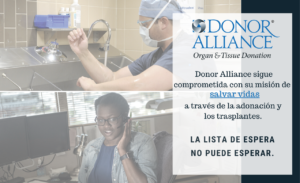 La lista de espera no puede esperar ya que las enfermedades de los candidatos en la lista de espera no se detienen, ni siquiera cuando el mundo lucha con la pandemia de COVID-19. Para garantizar la capacidad de continuar una evaluación y atención médica adecuada, hemos instituido un Plan de Oleada (Surge Plan) en colaboración con nuestros socios médicos. Estos pasos, junto con la transferencia de donantes a nuestro centro de recuperación independiente, minimizarán el impacto en los hospitales y asegurarán que el regalo de la vida continúe. Se han establecido pruebas aceleradas de COVID-19 para todos los donantes de órganos, lo que reduce los retrasos y nos permite acelerar los casos tanto como sea posible.
La lista de espera no puede esperar ya que las enfermedades de los candidatos en la lista de espera no se detienen, ni siquiera cuando el mundo lucha con la pandemia de COVID-19. Para garantizar la capacidad de continuar una evaluación y atención médica adecuada, hemos instituido un Plan de Oleada (Surge Plan) en colaboración con nuestros socios médicos. Estos pasos, junto con la transferencia de donantes a nuestro centro de recuperación independiente, minimizarán el impacto en los hospitales y asegurarán que el regalo de la vida continúe. Se han establecido pruebas aceleradas de COVID-19 para todos los donantes de órganos, lo que reduce los retrasos y nos permite acelerar los casos tanto como sea posible.
El Gobierno Federal ha clasificado los trasplantes de órganos como cirugías esenciales no electivas, que deben continuar incluso en medio de la amenaza de este virus. Los Centros de Servicios de Medicare y Medicaid reiteraron recientemente la naturaleza crítica del acceso a los órganos que salvan vidas y solicitaron que todos los hospitales donantes continúen permitiendo que el personal de recuperación de órganos ingrese a los hospitales donantes para facilitar el regalo de la vida.
Dada la naturaleza crítica y vital del trasplante de órganos, Donor Alliance está trabajando en estrecha colaboración con los gobiernos estatales y locales, hospitales donantes y centros de trasplante para garantizar que este servicio médico esencial continúe sin interrupción.
La Donación y los Trasplantes se Siguen Realizando
La necesidad de órganos trasplantables no ha disminuido durante la pandemia. Las personas en la lista de espera siguen necesitando trasplantes para salvar sus vidas ya que sus enfermedades no se detienen. Es por eso que Donor Alliance sigue comprometida a maximizar todas las oportunidades de donación, mientras mantiene a su personal, los receptores y la comunidad a salvo.
La Exposición al COVID-19 NO Impide Donaciónes Futuras, a Pesar de que el COVID-19 Activo o Agudos es Actualmente una Exclusión Médica para la Donación.
Sin un tratamiento o cura existente, el COVID-19 activo o agudo es actualmente una exclusion médica para la donación de órganos y tejidos. Sin embargo, como con muchas otras enfermedades, es probable que la ciencia y los avances médicos cambien eso con el tiempo e incluso se espera que el coronavirus activo no sea algo que descarte la donación en los próximos años, al igual que la gripe.
La decisión de utilizar órganos de donantes recae en última instancia en los cirujanos de trasplantes que manejan decisiones complejas en torno al cuidado del paciente.
Los Pacientes que se Recuperaron del Coronavirus Pueder Ser Elegibles para ser Donantes de Órganos
Una persona que ha pasado la fase aguda de la enfermedad puede ser elegible para la donación de órganos ahora y en el futuro. Al igual que con otras enfermedades virales, como la gripe o Epstein Barr, la exposición histórica no descarta automáticamente la donación.
Por favor no te descartes automáticamente. Si tu apoyas la donación de órganos, ojos y tejidos, te invitamos a que te registres como donante en este momento. Deja que los profesionales médicos determinen si eres elegible para donar cuando ese momento llegue.
La Donacion de Órganos en Vida
La información en esta página es pertinente a la donación de órganos y tejidos después de fallecer. La donación en vida es facilitada directamente por los Centros de Trasplantes. Por favor contacta a uno de los cuatro centros de trasplantes en nuestra área para obtener más información.
Precauciones que estamos tomando en Donor Alliance
Actualizado el 29 de abril
Los suministros críticos y el equipo de protección personal (PPE) se han asegurado y proporcionado al personal esencial. Si bien continuamos 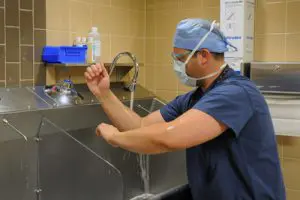 limitando la cantidad de personal que va a los hospitales utilizando un enfoque y una evaluación virtual cuando sea posible, nuestro personal continúa facilitando el regalo de la vida.
limitando la cantidad de personal que va a los hospitales utilizando un enfoque y una evaluación virtual cuando sea posible, nuestro personal continúa facilitando el regalo de la vida.
Para proteger la salud y la seguridad de nuestros empleados y receptores de trasplantes a través de esta pandemia, Donor Alliance está realizando pruebas a cada donante, maximizando el trabajo virtual, limitando la cantidad de personal que asiste a los hospitales y brindando la mayor cantidad de equipo de protección personal posible.
Donor Alliance siempre se ha adherido y se adherirá a los más altos estándares médicos. Continuaremos siguiendo las pautas de prevención de infecciones de nuestros hospitales locales, que abordan COVID-19, mientras monitoreamos el brote. También estamos siguiendo las pautas y recomendaciones de CDC, las agencias locales de salud pública y la comunidad de trasplantes, adaptándonos a cualquier problema planteado por COVID-19. Esto incluye la detección y prueba de donantes o donantes potenciales que podrían haber contraído COVID-19.
Todas las iniciativas en persona han sido canceladas hasta el 6 de Julio.
Actualizado el 18 de mayo
A medida que el virus COVID-19 continúa creciendo como un problema de salud pública, queremos asegurarnos de hacer nuestra parte para limitar la propagación del virus y mantenerte a salvo. Como tal, estamos cancelando todos los programas, proyectos y eventos en persona hasta el 6 de Julio. Todas las actividades después del 6 de Julio están avanzando según lo planeado.
Continúa Mostrando tu Apoyo a la Donación de Órganos y Tejidos Virtualmete
A pesar de que muchas de nuestras actividades en persona han sido pospuestas hasta nuevo avios, ¡aún puedes ayudar y mostrat tu apoyo a la donación desde donde te encuenres!
Visita nuestras páginas de Facebook @DoneVidaColorado @DonateLifeColorado o @DonateLifeWyoming para aprender cómo puedes continuar educando e inspirando el apoyo público a la donación de órganos, ojos y tejidos.
Todas las instalaciones de Donor Alliance están cerradas al público y al personal no esencial hasta el 6 de Julio
Actualizado el 18 de mayo
Todo el personal no esencial de Donor Alliance trabajará de forma remota hasta el 6 de Julio. Continuaremos con las actividades habituales y se puede contactar por correo electrónico o por teléfono.
Aunque estamos realizando cambios en el Mes de Done Vida, nuestras operaciones diarias no se han detenido. Nuestros equipos clínicos y hospitales socios continúan trabajando incansablemente todos los días para llevar el regalo de la vida a los todos necesitados. Donor Alliance siempre se ha adherido y se adherirá a los más altos estándares médicos y está trabajando en estrecha colaboración con las agencias estatales y locales para evaluar y adaptarse a cualquier problema planteado por COVID-19.
Informacion y recursos sobre COVID-19
- United Network for Organ Sharing information regarding COVID-19
- Centers for Disease Control and Prevention (CDC): Coronavirus Disease 2019 (COVID-19)
- The American Society of Transplantation: COVID-19 information for transplant recipients, candidates and professionals
- The Association of Organ Procurement Organizations (AOPO): COVID-19 Bulletin
- Organ Procurement and Transplantation Network (OPTN): Information for transplant programs and OPOs regarding 2019 Novel Coronavirus
- American Association of Tissue Banks: COVID-19 Updates
- State of Colorado Information on the Outbreak of Coronavirus Disease 2019 (COVID-19)
- Wyoming COVID-19 Info & Updates
- Wyoming Department of Health
Receptores de trasplantes
La Sociedad Estadounidense de Trasplantes ha publicado un recurso de Preguntas frecuentes en la comunidad de trasplantes que proporciona información detallada para los receptores de trasplantes con respecto a COVID-19 (coronavirus y donación de órganos / donación de tejidos). A medida que haya más información disponible, el documento continuará siendo actualizado. Los centros locales de trasplante también se pueden usar como un recurso para receptores que tienen preguntas en Colorado y Wyoming.
Siga las precauciones de los Centros para el control de enfermedades (CDC), que incluyen:
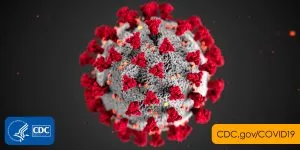
Picture Courtesy: CDC
- Lávese las manos con frecuencia con agua y jabón durante al menos 20 segundos; especialmente después de ir al baño, antes de comer y después de sonarse la nariz, toser o estornudar. Si no hay agua y jabón disponibles, use un desinfectante para manos a base de alcohol con al menos 60% de alcohol.
- Evitar el contacto cercano con personas que están enfermas.
- Evite tocarse los ojos, la nariz y la boca con las manos sin lavar.
- Quédese en casa cuando esté enfermo y mantenga a sus hijos en casa cuando estén enfermos.
- Cúbrase cuando tosa o estornude con un pañuelo desechable, luego tírelo a la basura.
- Limpie y desinfecte los objetos y superficies que se tocan con frecuencia con un spray o toallita desinfectante de limpieza doméstica.
A medida que conocemos como se desarrolla la situación y los nuevos recursos disponibles, publicaremos actualizaciones aquí.
Three Easy Ways to #ShowYourHeart for National Blue & Green Day 2020
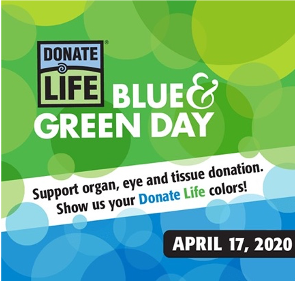 National Blue & Green Day 2020 is a time to #ShowYourHeart in support of organ, eye and tissue donation! The observance is recognized nationally every year during National Donate Life Month. Celebrate National Blue & Green Day with us on Friday, April 17, 2020!
National Blue & Green Day 2020 is a time to #ShowYourHeart in support of organ, eye and tissue donation! The observance is recognized nationally every year during National Donate Life Month. Celebrate National Blue & Green Day with us on Friday, April 17, 2020!
Three Easy Ways You Can #ShowYourHeart for National Blue & Green Day 2020:
1.) Participate in the Donate Life Blue & Green Day Photo Contest:
First, take a photo of your prettiest blue and green dessert, of you and your family wearing your best blue and green outfit, or of your pet decked out in their blue & green!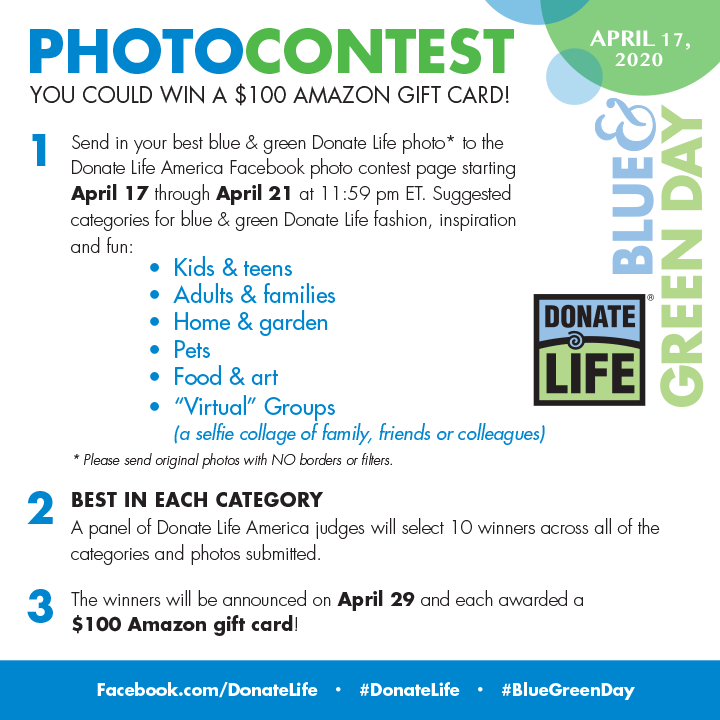
Then, enter that photo into the contest on the Donate Life America Facebook page for a chance to win a $100 Amazon Gift Card! Your fun photos can be submitted into one of the following categories: kids & teens, adults & families, home & garden, pets or food & art. See the 2019 winner for some inspiration.
Don’t forget to also share your best Blue & Green Day photos on your Facebook page and tag us at Donate Life Colorado or at Donate Life Wyoming!
2.) Join Us for a Virtual Coffee & Conversation on Facebook:
Grab your coffee and tune in to our Facebook pages on Friday, April 17 as we answer some of the most commonly asked organ, eye and tissue donation and transplantation-related questions in a video!
Have a burning question you’d like to see us answer? Leave us a comment on the video on videos found on Donate Life Colorado Facebook page or the Donate Life Wyoming Facebook page.
We also encourage you to share the video on your own Facebook page with one fact you learned about organ, eye and tissue donation!
3.) #ShowYourHeart with an Act of Kindness:
Last but not least, something that can be done any day this April, you can #ShowYourHeart with an act of kindness in honor of organ, eye and tissue donation. Now more than ever, the world and our community needs kindness. 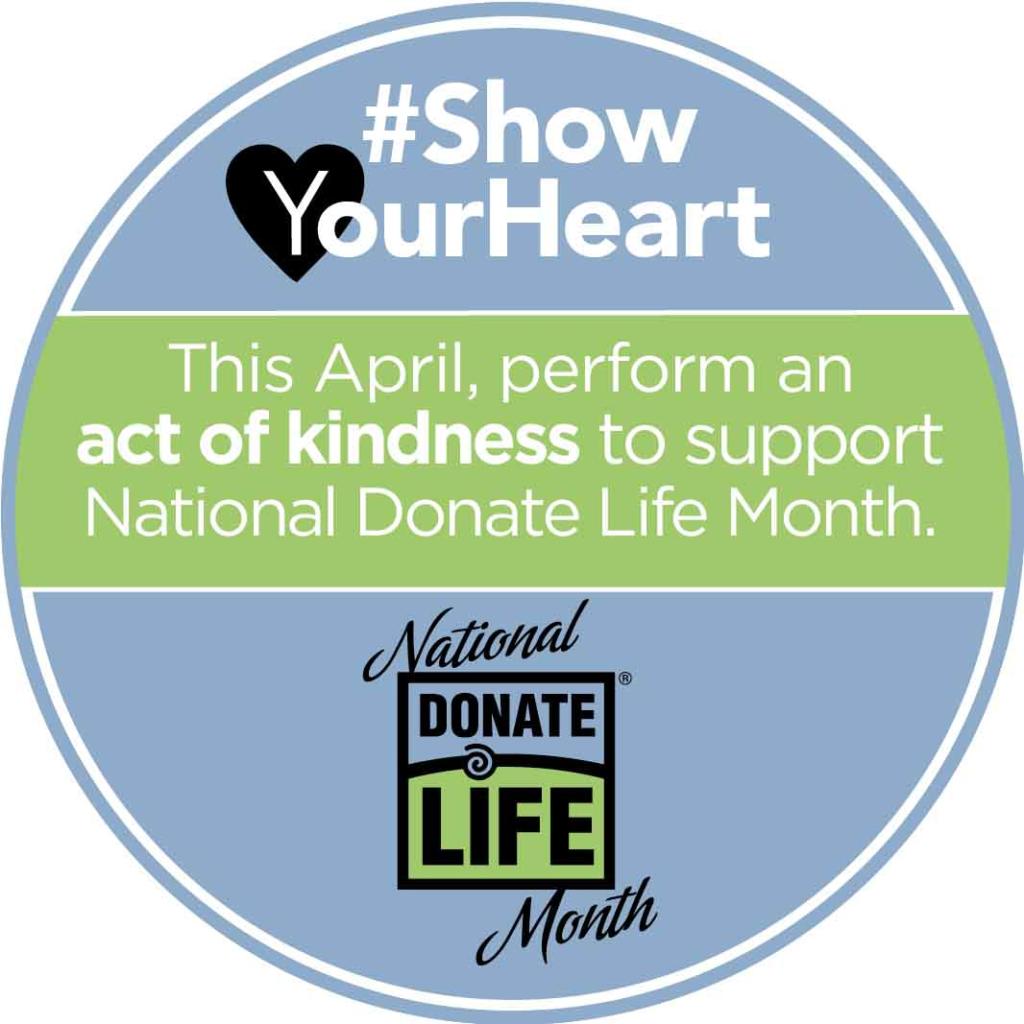 Simply perform an act of kindness, like; sending a “thinking of you note” to someone who lives alone, dropping off groceries to your elderly neighbors, or signing up to be an organ eye and tissue donor. And don’t forget to remind those you are helping that organ, eye and tissue donation is the ultimate act of kindness!
Simply perform an act of kindness, like; sending a “thinking of you note” to someone who lives alone, dropping off groceries to your elderly neighbors, or signing up to be an organ eye and tissue donor. And don’t forget to remind those you are helping that organ, eye and tissue donation is the ultimate act of kindness!
Then, share your act of kindness on your Facebook page with the hashtag #ShowYourHeart and tag us! Make sure you make your post is public so we can see it. Once that’s done, we’ll give you a code for a FREE coffee to say thank you!
If you’re looking for something fun to do or ways to show your support this National Donate Life month, consider getting involved through one (or more) of the three ways listed above! We can’t wait to see all of your photos and acts of kindness on National Blue & Green Day. As always, you can show your support by signing up to be an organ, eye and tissue donor from home! Head to DonateLifeColorado.org or DonateLifeWyoming.org any time to sign up.
#MuestraTuCorazon en el Mes Nacional de Done Vida: Cómo crear conciencia sobre la donación de órganos, ojos y tejidos desde tu casa
La donación de órganos, ojos y tejidos es el mayor acto de generosidad, y Colorado y Wyoming se encuentran entre los estados más generosos del país cuando se trata de registrarse para convertirse en donante. Sin embargo, la necesidad de órganos trasplantables es una crisis de salud pública en curso y es importante recordar la importancia de decir Sí, incluso en estos tiempos difíciles y sin precedentes. Es por eso que iniciamos el Mes Nacional de Done Vida con una invitación a todas las comunidades de nuestra región: #MuestraTuCorazon con un acto de generosidad desde casa.
Muchos en nuestra comunidad confían en esa generosidad para sobrevivir a enfermedades que amenazan la vida. Sin la generosidad de 191 donantes de órganos el año pasado, 596 personas aquí en nuestra comunidad no habrían tenido una segunda oportunidad en la vida.
Todos podríamos usar un poco de generosidad y amabilidad, especialmente en tiempos difíciles como estos. ¡Invitamos a todos los miembros de nuestra comunidad a celebrar con nosotros este abril! Aquí te decimos cómo participar, incluyendo varias formas de mostrar tu apoyo desde tu casa:
Comparta tus actos de generosidad y síguenos en Facebook con #MuestraTuCorazon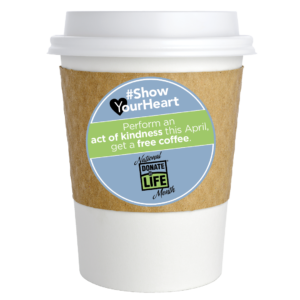
1. Realiza un acto genuino de Generosidad: durante todo el mes de abril, apoya a tus amigos, familiares, compañeros de trabajo y vecinos con actos de generosidad y bondad.
2. Comparte tu #ActodeGenerosidad y haznos TAG en @DoneVidaColorado en Facebook con el hashtag #MuestraTuCorazon para recibir un café gratis*
#MuetsraTuCorazon realizando uno de los siguientes actos de generosidad:
- Regístrate como donante de órganos, ojos y tejidos y comparte tu decision con tu familia
- Deten el elevador para la persona que viene detras de ti
- Habla sobre la donación con tu familia y amigos
- Compra un café para tu colega de la oficina
- Ofrecete a comprar y entregar el mandado de algun vecino mayor
- Apoya a los restaurantes y negocios locales comprando en linea
- Quita la nieve del carro o de la banqueta de tu vecino
Algunos de nuestros voluntarios apoyan a sus comunidades en honor a los seres queridos y donantes
Muchos de nuestros voluntarios Advocates for Life son familiares de donantes o receptores que honran a sus seres queridos y donantes durante todo el año, pero están utilizando el Mes Nacional de Done Vida como una oportunidad especial para honrar a los donantes. Te compartimos algunas formas en que nuestros voluntarios están contribuyendo para crear conciencia sobre la donación de órganos, ojos y tejidos y apoyando a sus comunidades:
- Piedras del Mes Nacional de Done Vida: Terri Reed, Colorado Springs, CO: En memoria de su hijo Travis y su generoso espíritu, Terri hace y entrega paquetes de atención a la comunidad de personas sin hogar. Cada año, ella crea una bolsa en recuerdo de su cumpleaños. Este año, ella y su familia también están pintando 2,000 rocas para colocar por todo Colorado Springs, cada una representando a alguien en nuestra comunidad que espera un trasplante de órganos para salvar su vida.
- Pat Thomas, Cody, WY: Para honrar a su hija Kathleen, Pat Thomas colgó una pancarta en el centro de Cody en abril en honor al Mes Nacional de Done Vida y continúa realizando sus propios actos de generosidad durante todo el año. Este año, continua con su tradición de compartir la historia de su hija para crear conciencia sobre la importancia de la donación de órganos, ojos y tejidos. Al convertirse en donante, la hija de Pat, Kathleen, pudo devolver la vista a dos personas y salvar y sanar la vida de muchos otros.
Advocate Spotlight: Terri Reed
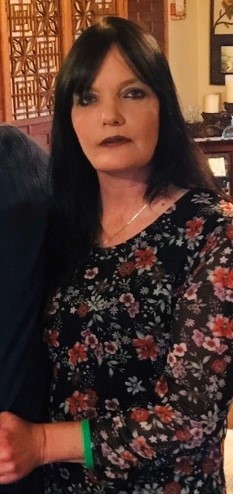 Donor Alliance volunteers and advocates are the heart and soul of our efforts to inspire and inform our community about the importance of signing up to be an organ, eye and tissue donor in Colorado and Wyoming. Each of our volunteers and advocates has their own unique and inspiring story to tell. In this advocate spotlight, meet Terri Reed, a donor mother from Colorado Springs, CO.
Donor Alliance volunteers and advocates are the heart and soul of our efforts to inspire and inform our community about the importance of signing up to be an organ, eye and tissue donor in Colorado and Wyoming. Each of our volunteers and advocates has their own unique and inspiring story to tell. In this advocate spotlight, meet Terri Reed, a donor mother from Colorado Springs, CO.
Get to Know Terri Reed in this Month's Advocate Spotlight:
What is your favorite thing about volunteering for Donor Alliance? Being an Advocate for Life is my passion. It gives me the opportunity to share my son Travis’s story, educate, inspire, and encourage others to become registered donors and to let their loved ones know their decision. Being a donor mom, it truly touches my heart when I meet recipients who have received their gift of life. It inspires me even more to do all I can to offer hope for those still waiting for their gifts.
If you could have any superpower for 24 hours, what would you do? Have visiting hours in heaven so myself and others who have experienced a loss, could visit our loved ones.
What is the best piece of advice you’ve ever received? Every one of us has the ability to make a positive difference in the lives of others. Kindness is free.
What is your favorite holiday and why? Easter, because we celebrate the resurrection of Jesus and the promise of eternal life.
What is your favorite season and why? Autumn. I love to see the beautiful leaves changing color.
What is your proudest accomplishment? Being a mother to six absolutely amazing children.
What is the last book you read or movie you saw? Would you recommend it? Caring for Donor Families, before, during and after. I definitely would recommend it.
What are some of your favorite hobbies? Camping, boating, hiking, painting.
If you could take an all-expenses paid vacation, where would you go? Ireland.
What song would you sing at karaoke night? Go light your world by Chris Rice.
#ShowYourHeart for National Donate Life Month: How to Raise Awareness for Organ, Eye and Tissue Donation from Home
Organ, eye and tissue donation is the ultimate act of kindness, and Colorado and Wyoming are among the most generous states in the country when it comes to signing up to become a donor. However the need for transplantable organs is an ongoing public health crisis and residents need to be reminded of the importance of saying Yes, even among these unprecedented times. That’s why we’re kicking off National Donate Life Month with an invitation to communities across our region to #ShowYourHeart with an act of kindness from home.
Many in our community rely on that kindness to survive life threatening illnesses. Without the kindness of 191 organ donors last year, 596 people right here in our community would not have gotten a second chance at life.
We could all use a little kindness, especially during challenging times like these. We encourage members of our community to lift each other up by celebrating with us this April! Here is how to take part, including several ways to show your support from home:
Share Your Acts of Kindness and Follow Along with #ShowYourHeart on Facebook

- Perform a Genuine Act of Kindness: Throughout the month of April, support your friends, family, coworkers and neighbors with acts of kindness.
- Share your act of kindness on Facebook: using #ShowYourHeart and tag @DonateLifeColorado OR @DonateLifeWyoming to get a digital code for a free $5 Starbucks gift card to save for yourself or gift to someone else.
- Pass it On: Discuss organ, eye and tissue donation with family and friends and encourage them to share the love!
Not on Facebook, no problem! Connect with a family member or friend who is and ask them to share your act of kindness on your behalf.
Need some inspiration? Here are some ways you can support your community virtually or from a safe distance:
- Visit DonateLifeColorado.org or DonateLifeWyoming.org to sign up to become an organ, eye and tissue donor and discuss your decision and why you support donation with your family
- Transplant recipients can write a letter of hope and healing to your local transplant program for waiting recipients
- Donate canned goods to a local food bank
- Email or write to an old teacher or mentor who inspired you.
- Buy/deliver groceries for an elderly neighbor
- Send a “thinking of you” note to a friend you haven’t seen in a while
- Support local businesses by shopping online
- Check-in on someone that lives alone (give them a call, offer to drop off groceries etc.)
- Support someone in the healthcare industry by buying them a meal or writing them a thank you note
- Support local restaurants by ordering takeout or delivery
- Post a positive message on a nursing home Facebook page
Advocates for Life Give Back in Honor of Loved Ones and Donors
Many of our Advocates for Life volunteers are donor families or recipients that honor their loved ones and donors year-round, but they are using National Donate Life Month as a special opportunity to honor donors while paying it forward. Here are some ways our volunteers are giving back to help raise awareness around organ, eye and tissue donation:
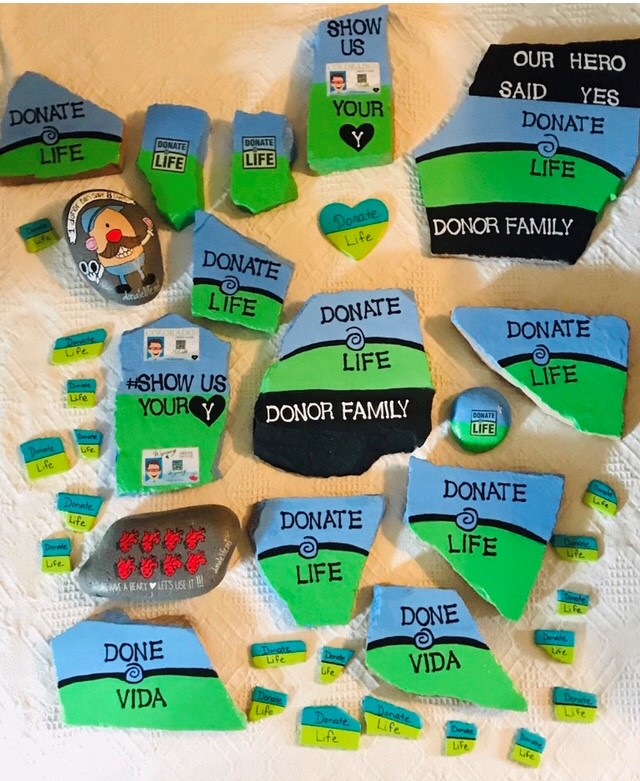 Terri Reed, Colorado Springs, CO: In memory of her son Travis and his kind, generous spirit, Terri makes and handout care packages to the homeless community. Each year, she adds another bag in remembrance of his birthday. This year, she and her family are also painting 2,000 rocks to scatter throughout Colorado Springs—each representing someone in our community waiting for a lifesaving donation.
Terri Reed, Colorado Springs, CO: In memory of her son Travis and his kind, generous spirit, Terri makes and handout care packages to the homeless community. Each year, she adds another bag in remembrance of his birthday. This year, she and her family are also painting 2,000 rocks to scatter throughout Colorado Springs—each representing someone in our community waiting for a lifesaving donation.- Rob Fettner, Aurora, CO: A two-time heart transplant recipient, Rob is one of the original members of the Bearded Villains, a local charity focused on giving back while celebrating brotherhood. He helps run the Rocky Mountain chapter, and the group recently hosted a benefit that raised nearly $1,000 to support organ and tissue donation.
- Pat Thomas, Cody, WY: To honor her daughter Kathleen, Pat Thomas has hung a banner in downtown Cody in April in honor of National Donate Life Month and continues to perform her own acts of kindness throughout the year to pay it forward. This year, she will continue her tradition of sharing her daughter’s story to raise awareness around the importance of organ, eye and tissue donation. By becoming an donor, Pat’s daughter Kathleen was able to restore sight to two different recipients and save and heal the lives of many others.
National Blue & Green Day
Let’s see your Donate Life colors! On National Blue and Green Day, April 17th, show your support for organ, eye and tissue donation by wearing blue and green, or better yet, changing your porch lights to blue and green!
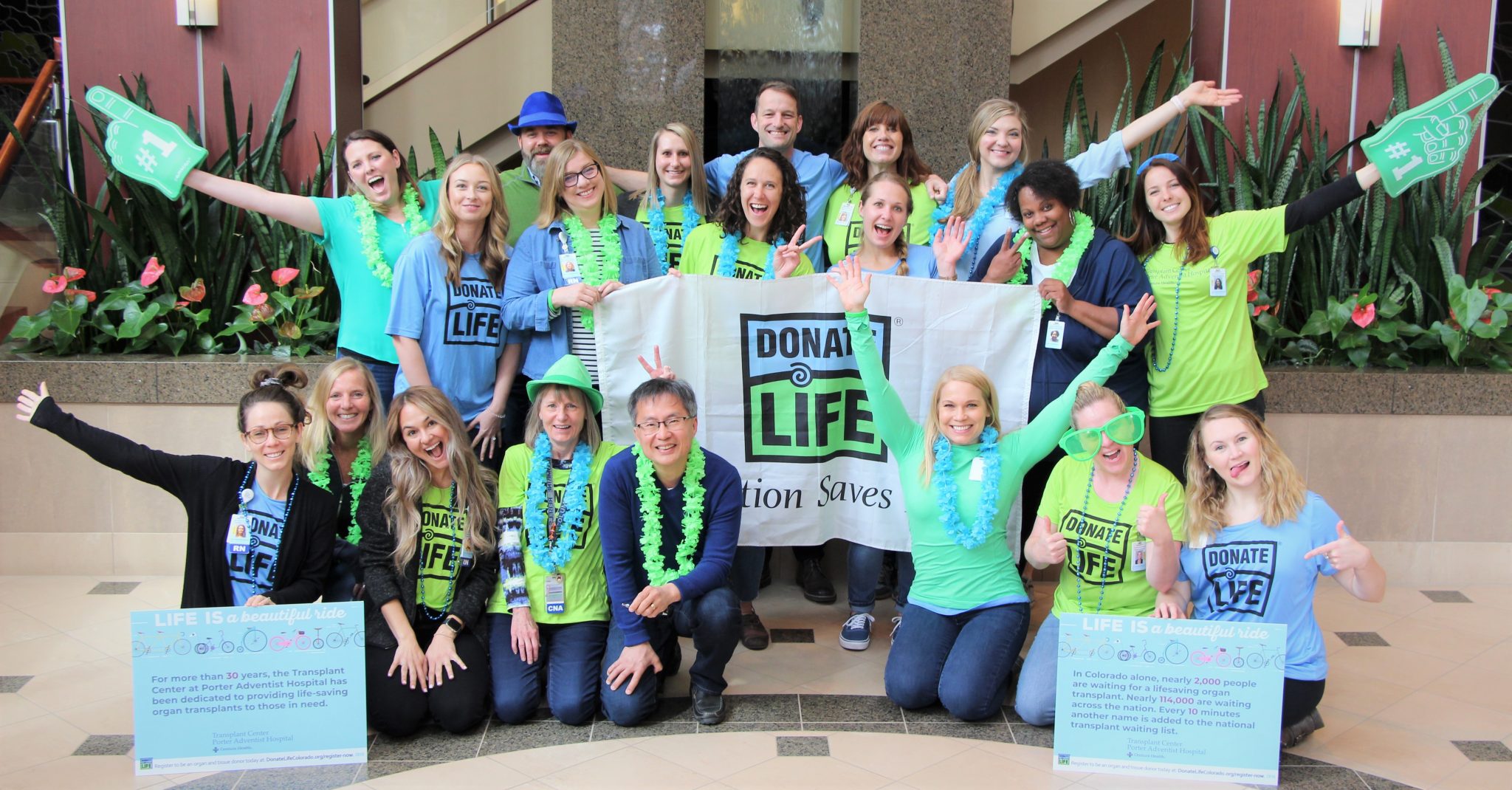
More details on how to participate, including #ShowYourHeart terms and conditions, can be found at DonorAlliance.org/NDLM
Staff Spotlight: Ryea’ O’Neill
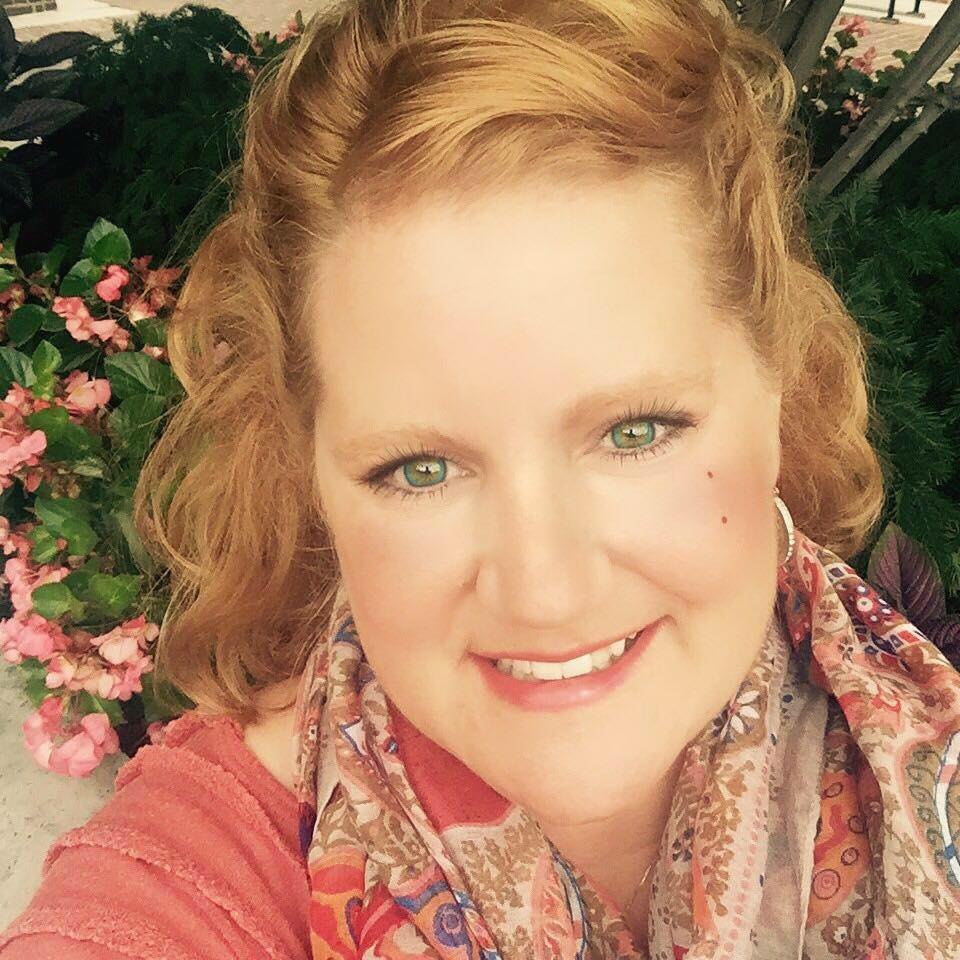 We’re so proud to work with each and every one of our staff members here at Donor Alliance. In our Staff Spotlight, we like to take a minute to share who we are and why we work at Donor Alliance. Meet Ryea' O'Neill, Community Relations Coordinator for Donor Alliance in Wyoming. In that role, Ryea' works with our Wyoming Advocates for Life to coordinating events to managing Donate Life Wyoming social properties, Ryea's wears many hats. This is our staff spotlight: Ryea' O'Neill.
We’re so proud to work with each and every one of our staff members here at Donor Alliance. In our Staff Spotlight, we like to take a minute to share who we are and why we work at Donor Alliance. Meet Ryea' O'Neill, Community Relations Coordinator for Donor Alliance in Wyoming. In that role, Ryea' works with our Wyoming Advocates for Life to coordinating events to managing Donate Life Wyoming social properties, Ryea's wears many hats. This is our staff spotlight: Ryea' O'Neill.
About Staff Spotlight: Ryea' O'Neill
Name: Ryea' O'Neill
Position: Wyoming Community Relations Coordinator
Years at Donor Alliance: 2 ½ years
Tell us a little about your role with Donor Alliance: I often feel like a “Jack of all trades,” but I love it and wouldn’t change a thing! I work in the Casper, Wyoming office. From coordinating community events, to supporting our Advocates for Life volunteer program and our Transplantation Science program, to working with the Driver Services to educate and train staff to managing media and social media, I strive to connect with communities across this beautiful state that I call home.
What made you want to work for Donor Alliance? Coming from a Donor family and a Recipient family, I’ve been touched by donation and transplantation on both sides. Donor Alliance staff treated my family with such caring and respect during our time of grief. I am reminded daily how important this work is.
What do you enjoy most about your role/what’s the most rewarding aspect of your role? Connection! Just a simple conversation over tea or coffee is one of the best things. I get to meet people and learn about their stories and how donation and transplantation has saved and healed their lives.
When you’re not working, what do you like to do for fun? I am a very busy sports parent of two teenage boys. My hubby and I spend lots of time watching and playing sports, mostly soccer and hockey. I am also working towards a Doula certificate that involves caring for those at the end of life.
What piece of advice would you give your younger self? Travel more. I started traveling more in recent years. The value of experiencing a world so different from your own helps to open not only your eyes, but also your heart to the beauty of difference.
In honor of our #ShowYourHeart campaign for National Donate Life Month, what’s the most recent Act of Kindness you performed? We often help our neighbors with yard work, or household chores, as they are elderly. I love that my children get to experience the special bond of respecting and caring for the elderly.
Thanks for reading our staff spotlight!
#GetTheFacts: What Types of Donation Does the Donor Registry Cover?
What types of donation does the donor registry cover? With all of the different types of donation out there today, it can get confusing as to who does what. We often receive questions about bone marrow donation, blood donation, whole body donation and more.
So today, we’re here to answer some of your questions about the different types of donation and get you the resources you need to make educated decisions about what you want to donate before and after death.
What did I sign up for when I got the heart on my driver license?
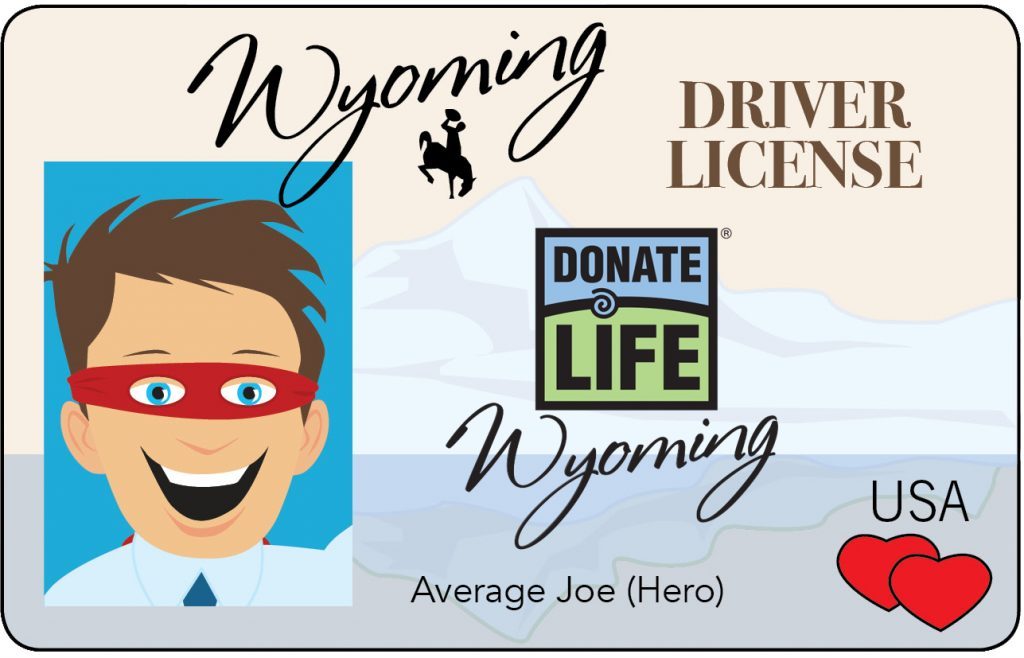
When you say Yes at the driver license office while obtaining your permit, license or state ID, you are signing up to be an organ, eye and tissue donor after death. That means that if you are eligible to be a donor at the time of your death, you may be able to donate up to six organs (heart, lungs, liver, kidneys, pancreas, small intestines) and six different types of tissue (corneas, heart valves, skin, veins, tendons, bones).
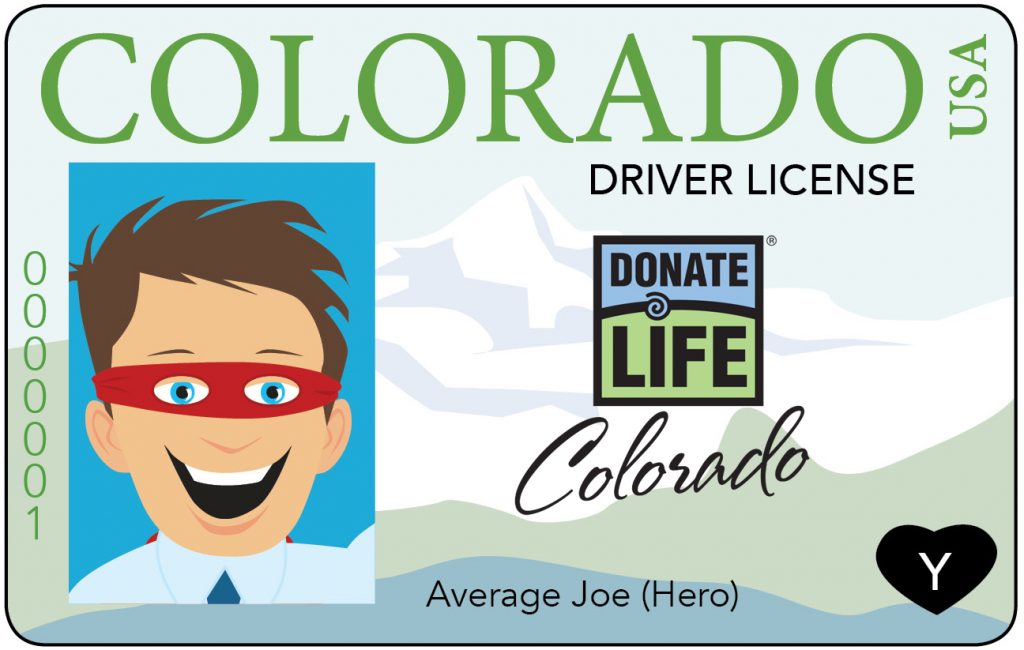 Under the donor registry organs and tissues are recovered for transplantation, but if an organ or tissue is not able to be transplanted after recovery, it may go to research. This helps increase the possibility of advances in medical science.
Under the donor registry organs and tissues are recovered for transplantation, but if an organ or tissue is not able to be transplanted after recovery, it may go to research. This helps increase the possibility of advances in medical science.
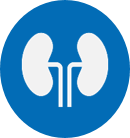
How can I sign up to donate a kidney to my family member?
This sounds like you might be interested in being a living donor! A living donor can give one kidney, up to 60% of their liver (don’t worry, it regenerates!), or a part of one lobe of the lung, pancreas and small intestines. If you have a loved one who is in need of an organ transplant and you would like to donate, thank you for your generosity! You will need to work with their transplant center to be evaluated and see if you are a match. If you are interested in donating to one of the nearly 115,000 people on the transplant waiting list, thank you for considering non-directed donation! We encourage you to research a transplant center near you to learn more about the process.

If I can’t donate blood, can I be an organ and tissue donor?
There is a possibility, so don’t rule yourself out! The criteria for donating organs and tissue after death is different from the criteria to donate blood while you are alive. Many things that may rule you out as a blood donor will not rule out organ donation. As advances in medical science continue to change how we treat people all the time, the criteria for donation also changes. What may be true now, may not be true at the time of your death. If you have the desire to sign up to be an organ, eye and tissue donor after death, why not do it? All potential donors go through a medical evaluation at the time of death so let the medical professionals make that determination in the future. Donating blood saves lives too! If you are healthy and able to do so, contact Vitalant or an organization near you.
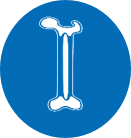
I’m on the bone marrow donor registry, does Donor Alliance do that too?
That’s great that you’ve signed up to save a life now! Donor Alliance does not recover bone marrow as a tissue after death. To learn more about marrow donation, check out Be The Match and Gift of Life Marrow Registry, US-based organizations that maintain bone marrow registries.
 How does whole body donation work?
How does whole body donation work?
Many people today are interested in donating their body to science for medical education purposes, or whole body donation. This is separate and distinct from the Donate Life Colorado and Donate Life Wyoming Organ and Tissue Donor Registries. We encourage you to do your research before you pick an institution. Some institutions allow you to be organ, eye or tissue donors before whole body donation and some do not. We also recommend that you check to see if they are AATB accredited. The American Association of Tissue Banks (AATB) has an accreditation process that many Organ Procurement Organizations and Tissue Banks go through in order to maintain consistent standards for the recovery process of tissues. If an organization that accepts whole body donation goes through this process, they are held to the same standards.
We hope this has helped clear up some confusion about the different types of donation. If you ever have questions, please don’t hesitate to contact us here at Donor Alliance!
As always, remember that you can sign up to be an organ, eye and tissue donor online anytime at DonateLifeColorado.org or DonateLifeWyoming.org.
Coronavirus (COVID-19) and Organ and Tissue Donation and Transplantation: Information and Resources
As we continue to fight against the coronavirus (COVID-19) pandemic, many residents have had questions about the impact on organ and tissue donation and transplantation. To help offer some insight and guidance, below we have key information from our area and links to additional resources. We’ll continually post updates on the coronavirus and organ and tissue donation and transplantation here as new information is released.
Precautions We’re Taking at Donor Alliance
To protect the health and safety of our teams and transplant recipients through this pandemic, Donor Alliance is testing every donor, maximizing virtual work, limiting the number of staff accessing hospitals and providing as much protective equipment as possible.
Donor Alliance has and always will adhere to the highest medical standards. We will continue to follow our local hospitals’ infection prevention guidelines, which address COVID-19, as we monitor the outbreak. We are also following guidelines and recommendations from the CDC, local public health agencies and the transplantation community, accessing and adapting to any issues posed by COVID-19. This includes the screening and testing of donors or potential donors that could have contracted COVID-19.
All Donor Alliance Offices are Closed to Visitors
As Donor Alliance continues to maximize virtual work, all offices are currently closed to visitors. If you need to reach a Donor Alliance staff member, please call 303-329-4747.
Though many of our events and observances are being celebrated virtually this year, our day-to-day operations have not stopped. Our clinical teams and hospital partners are continuing to work tirelessly every day to deliver the gift of life to those in need. Donor Alliance has and always will adhere to the highest medical standards and is working closely with state and local agencies to assess and adapt to any issues posed by COVID-19.
Virtual and Outdoor Community Activities Continue, Indoor Initiatives Evaluated on a Case-by-Case Basis
As the COVID-19 virus continues to be a public health concern, we want to ensure that we do our part to limit the spread of the virus and keep you safe. As such, our virtual and outdoor activities continue with limited capacity, following all state guidelines. Any requests to participate in indoor activities that meet state guidelines will be considered on a case-by-case basis as we continue to closely monitor the public health landscape.
Continue to Advocate for Organ and Tissue Donation
Even though we have limited in-person activities through year-end, you can still help and show your support virtually! Visit our Facebook pages @DonateLifeColorado, @DonateLifeWyoming or @DoneVidaColorado to learn how you can join us in educating and inspiring public support of organ, eye and tissue donation.
You can also visit our events page to stay up-to-date on any upcoming virtual or outdoor activities. And it’s a great time to sign up as an Advocates for Life Volunteer and complete training virtually.
The Waitlist Can’t Wait: Donor Alliance Continues with its Mission to Save Lives
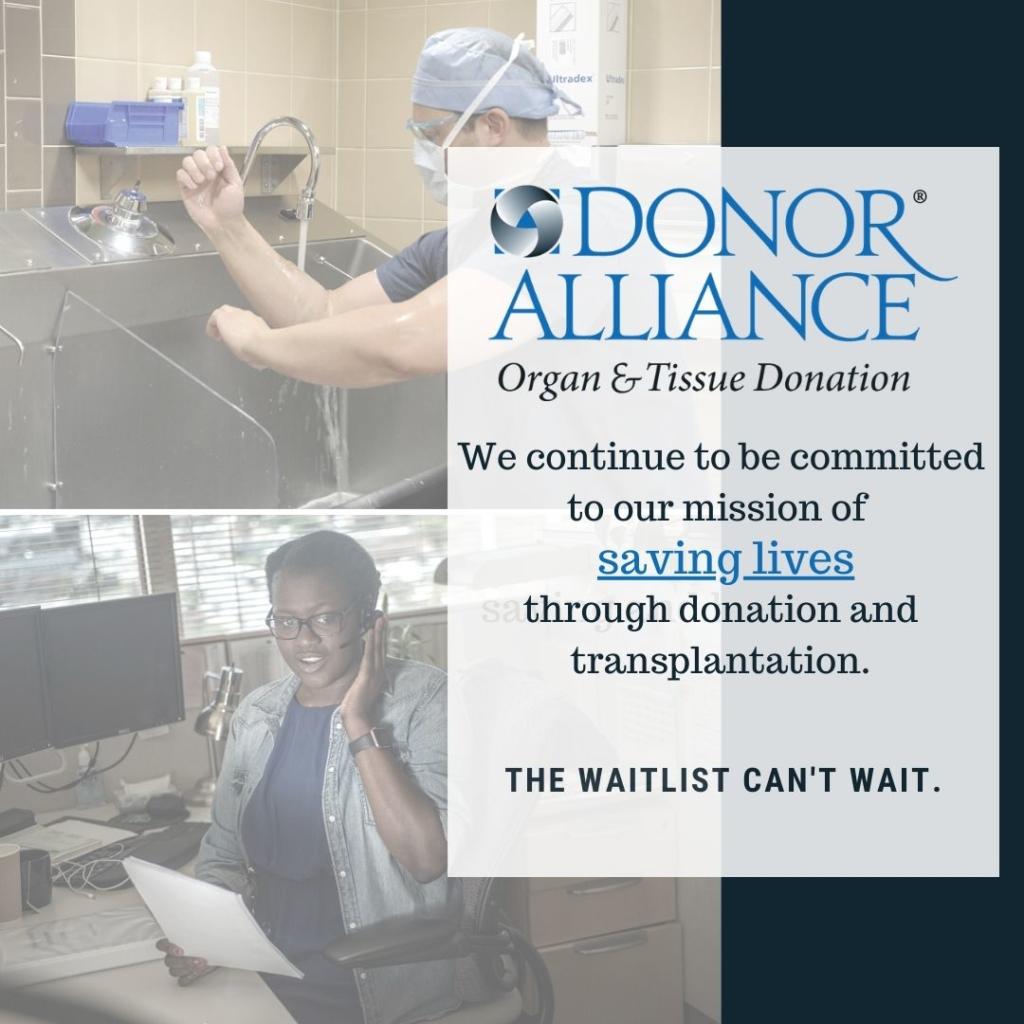 Donor Alliance’s mission is to save lives through organ and tissue donation and transplantation. With nearly 2,000 people in our area waiting for a lifesaving transplant right now, the need for transplantable organs is an ongoing public health crisis.
Donor Alliance’s mission is to save lives through organ and tissue donation and transplantation. With nearly 2,000 people in our area waiting for a lifesaving transplant right now, the need for transplantable organs is an ongoing public health crisis.
We are actively working to plan for and to mitigate any impacts of COVID-19 on our mission to save lives through organ and tissue donation and transplantation. The waitlist can’t wait; waitlist candidates’ illnesses do not pause, even as the world grapples with the COVID-19 pandemic. To ensure the ability to continue adequate medical evaluation and care, we’ve instituted a Surge Plan in collaboration with our medical partners. These steps, along with the transfer of donors to our stand-alone recovery center, will minimize impact on hospitals and ensure the gift of life continues. Accelerated COVID-19 testing has been established for all potential organ donors, reducing delays and allowing us to expedite cases as much as possible.
The Federal Government has classified organ transplants as essential, non-elective surgeries, which must continue even amidst the threat of this virus. The Centers for Medicare & Medicaid Services recently reiterated the critical nature of access to life-saving organs and requested all donor hospitals continue allowing organ procurement personnel into donor hospitals to facilitate the gift of life.
Given the critical and life-saving nature of organ transplant, Donor Alliance is working closely with state and local governments, donor hospitals and transplant centers to ensure this essential medical service continues without interruption.
COVID-19 and Organ & Tissue Donation: Exposure Does Not Prevent Future Donation, Even Though Active COVID-19 is Currently a Medical Rule-out
Living Organ Donation
The information on this page pertains to deceased organ and tissue donation. Living donation is facilitated directly through the transplant centers. Please contact one of the four transplant centers in our area for more information.
Transplant Recipients
The American Society of Transplantation has published a Transplant Community FAQ resource providing detailed information for transplant recipients regarding COVID-19 (coronavirus and organ donation / tissue donation). As more information becomes available, the document will continue to be updated. Local transplant centers can also be used as a resource for recipients that have questions in Colorado and Wyoming.
[caption id="attachment_26936" align="alignright" width="456"]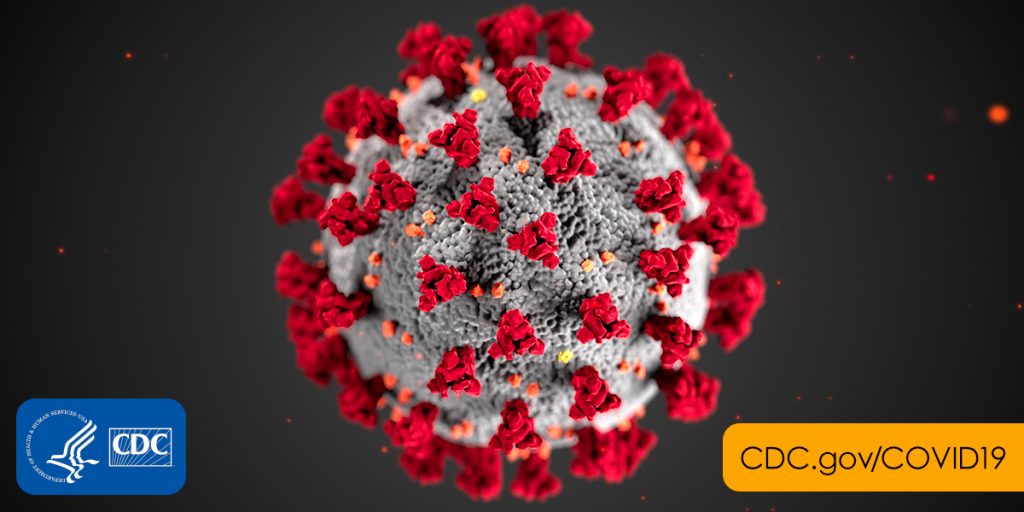 Picture Courtesy: CDC[/caption]
Picture Courtesy: CDC[/caption]
Follow Recommended Centers for Disease Control (CDC) Precautions, Including:
- Wash your hands often with soap and water for at least 20 seconds; especially after going to the bathroom, before eating, and after blowing your nose, coughing, or sneezing. If soap and water are not readily available, use an alcohol-based hand sanitizer with at least 60% alcohol.
- Avoid close contact with people who are sick.
- Avoid touching your eyes, nose, and mouth with unwashed hands.
- Stay home when you are sick, and keep your children at home when they are sick.
- Cover your cough or sneeze with a tissue, then throw the tissue in the trash.
- Clean and disinfect frequently touched objects and surfaces using a regular household cleaning spray or wipe.
As we learn of any new developments and as new resources become available, we will post updates here.
Ways to Help During the Coronavirus Crisis:
- https://covrn.com/https://helpcoloradonow.org/Help Colorado Now – volunteer or provide donations to help at-risk individuals get through the COVID-19 crisis
- Feeding Colorado – supports five food banks in Colorado
- American Red Cross – Mile High Area - help support disaster leadership throughout Colorado and Wyoming
- Wyoming Food Bank of the Rockies - provides food to those in need throughout Wyoming
- Help Main Street! – enter your zip code and find local businesses who have a way to help while they are closed / partially open
- Colorado COVID Relief Fund – provide aid to support Colorado communities and organizations affected by COVID-19
- Cheyenne Relief Fund – supports residents of Cheyenne, WY in need of assistance
- One Fair Wage Emergency Fund – supports restaurant workers, deliver workers, drivers and other tipped and service workers who are signed up across 10 states, including Colorado
COVID-19 and Organ & Tissue Donation Information and Resources
- United Network for Organ Sharing information regarding COVID-19
- Centers for Disease Control and Prevention (CDC): Coronavirus Disease 2019 (COVID-19)
- The American Society of Transplantation: COVID-19 information for transplant recipients, candidates and professionals
- The Association of Organ Procurement Organizations (AOPO): COVID-19 Bulletin
- Organ Procurement and Transplantation Network (OPTN): Information for transplant programs and OPOs regarding 2019 Novel Coronavirus
- American Association of Tissue Banks: COVID-19 Updates
- State of Colorado Information on the Outbreak of Coronavirus Disease 2019 (COVID-19)
- Wyoming COVID-19 Info & Updates
- Wyoming Department of Health
Aftercare: Conectando a Familias de Donantes y Receptores
Parte dos de tres de nuestra serie "Aftercare"
Muchos miembros de la familia de donantes y receptores han expresado lo significativo que es comunicarse y conectarse entre sí. Donor Alliance fomenta la correspondencia entre las familias de donantes y los receptores, y se enorgullece en ayudar a facilitar estas conexiones siempre que sea posible.
"Apoyar a estas increíbles familias a lo largo de su viaje de dolor y ayudar a conectarlas con la esperanza y la sanación que la donación puede brindar, es un privilegio", dijo Joyleen Helcoski, Coordinadora de Aftercare de Donor Alliance.
¿Cómo pueden las familias de donantes y los receptores iniciar el proceso de comunicación?
- Conectando a las familias de donantes y a los receptores de órganos: Si los miembros de la familia de donantes de Donor Alliance están interesados en conectarse con los receptores de órganos de sus seres queridos, ellos pueden iniciar el contacto primero. Hay dos formas en que los miembros de la familia de donantes pueden iniciar ese contacto:
- Enviando una carta o tarjeta a la oficina de Donor Alliance que incluya: el nombre completo de tu ser querido que donó, tu nombre completo y la relación con tu ser querido y la fecha en que tu ser querido falleció. (Donor Alliance, 200 Spruce Street, Suite 200, Denver, CO 80230)
- Los miembros de la familia de donantes también pueden enviar una carta electrónicamente, completando este formulario en línea.
Una vez que Donor Alliance recibe las cartas, por correo o electrónicamente, los miembros del personal de Aftercare envían la carta al centro de trasplante del receptor, donde luego se entregará al receptor.
¿No estás seguro qué escribir? Tenemos algunas sugerencias aquí.
Los receptores de órganos también pueden hacer el contacto inicial con sus familias donantes, los receptores deben enviar sus cartas a su centro de trasplantes para comenzar el proceso de comunicación.
- Conectando familias de donantes y receptores de tejidos: El proceso es un poco diferente para las familias de donantes de Donor Alliance cuyos seres queridos donaron tejidos (injertos de tejido como hueso, tejido blando, válvulas cardíacas o piel). En este caso, los receptores de tejido deben ser los primeros en iniciar la correspondencia y una vez que eso suceda, los miembros de la familia del donante pueden responder.
Es importante tener en cuenta que el papel de Donor Alliance en el proceso de comunicación es facilitar la correspondencia escrita y mantener la confidencialidad de las identidades de los miembros de la familia donante y los receptores hasta que ambas partes decidan que están listos para comunicarse directamente.
¿Qué sucede si las familias donantes no reciben correspondencia del receptor(s)?
Así como es una decisión de la familia del donante el escribir o no a los receptores, es la decisión del receptor si responde o no. Hay muchas razones por las cuales un receptor puede no contactar a la familia de su donante. Muchos receptores experimentan culpa del sobreviviente o tienen una recuperación difícil después de su trasplante. Algunos simplemente no pueden encontrar las palabras para expresar su gratitud. Independientemente de si un receptor decide o no escribir, ellos están sin duda agradecidos por la segunda oportunidad de vida que les dio su donante.
Conexiones locales:
[caption id="attachment_26840" align="alignright" width="300"]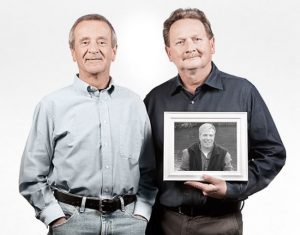 Larry (padre de un donante) con Bill (receptor de trasplante de corazón) sosteniendo una foto del Tyler, el hijo de Larry—su donante.[/caption]
Larry (padre de un donante) con Bill (receptor de trasplante de corazón) sosteniendo una foto del Tyler, el hijo de Larry—su donante.[/caption]
Tenemos varias historias conmovedoras de miembros familias de donantes que conocieron a los receptores de sus seres queridos. Aun cuando solo se mencionan algunas a continuación, ha habido muchas más conexiones, tanto públicas como privadas, entre las familias de donantes y los receptores en nuestra comunidad.
Algunas historias:
- Judi, mamá de un donante de Fort Collins, conoce al receptor del corazón de su hijo. Ve el video aquí
- Larry, un padre de un donante de Cheyenne, WY, conoce al receptor del corazón de su hijo. Lee la historia aquí.
Esta publicación es la segunda parte de nuestra serie de tres "Aftercare". Si aún no has leído la primera parte, "Recursos para las familias de donantes", te invitamos a que la leas aquí.
Para obtener más información y más recursos sobre Aftercare, visita la página de recursos familiares de donantes. Si aún no lo has hecho, te invitamos a registrarte para ser un donante de órganos, ojos y tejidos en cualquier momento en nuestros sitios web: DoneVidaColorado.org o DoneVidaWyoming.org.
#InTheNews: Uterine Transplants
One of the biggest stories in organ donation and transplantation so far this year has been the story of Jennifer Gobrecht, the second woman in the U.S. to have a uterus transplant from a deceased donor. You may have seen her story featured in any number of major news outlets across the country, including the New York Times, CNN and most recently People Magazine. So, what is a uterine transplant and how does it compare to other organ transplants? Let’s break it down.
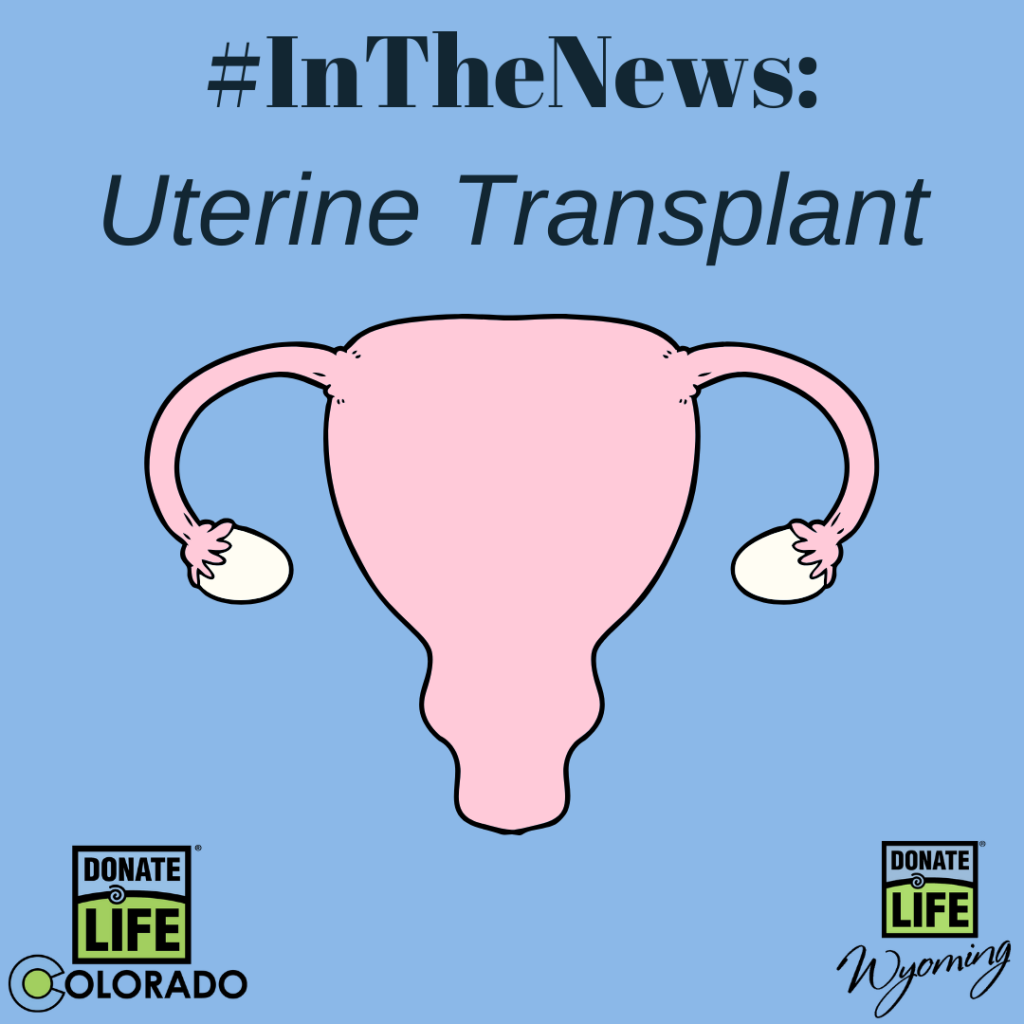
What is a Uterine Transplant?
Uterus transplants are currently rare and still relatively new but have already helped some women who otherwise couldn’t carry their own children. The procedure involves transplanting a healthy uterus from a living or deceased donor into a recipient that has been diagnosed with Uterine Factor Infertility (UFI).
A handful of uterus transplants have taken place around the world over the last few years. The first uterine transplant performed in the U.S. was in Cleveland in 2016, but failed due to complications and the uterus was removed. Penn Medicine began conducting uterus transplants with more success in 2017 with the start of UNTIL (Uterus Transplantation for Uterine Factor Infertility). The practice has since expanded to include other programs throughout the country.
Why would a woman need a uterus transplant?
According to the Penn Medicine, all participants in these studies and programs suffer from Uterine Factor Infertility (UFI), meaning they were either born without a uterus—as in Jennifer’s case—or have had their uterus removed for medical reasons.
Candidates for a transplant go through a thorough medical evaluation before being listed for a transplant with the United Network for Organ Sharing (UNOS). While uterine transplantation can occur using both living and deceased donors, most programs in the US work with living donors. Like all organ and tissue transplants, uterine donation is an act of altruism. However, while intended to help give and sustain a life through pregnancy, uterine transplants are not lifesaving and the uterus will eventually be removed from the recipient following a successful pregnancy or pregnancies.
Does Donor Alliance facilitate uterine transplants?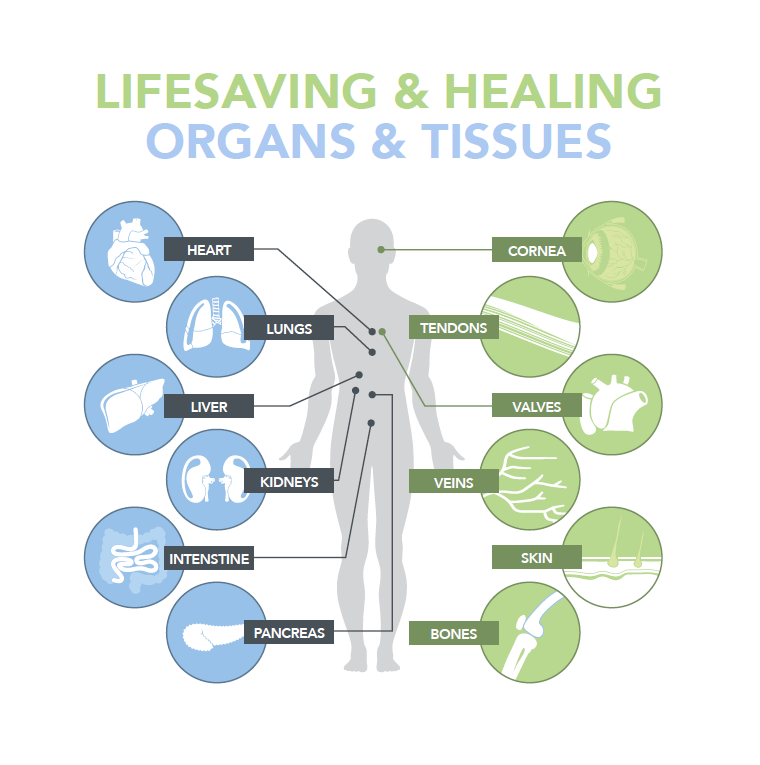
Currently, there aren’t any uterine transplant programs in our region, and Donor Alliance doesn’t recover uteruses in Colorado and Wyoming. If we were to begin facilitating these types of transplants, like other rare transplants including vascular composite allografts (face and hand transplants), the donation would only take place after conversations and authorization by the next of kin. State donor registries do not pertain to the VCA or uterine transplants, only to the standard transplantable organs and tissues.
Get the facts on the donation process, including which transplants we facilitate.
As always, you can sign up to be an organ, eye and tissue donor online anytime at Donate Life Colorado or Donate Life Wyoming.
Aftercare: Answering Common Aftercare Questions
Part Three of Three in our “Aftercare” Series
To wrap up our “Aftercare” series, we’re answering some of the most frequently asked questions donor families have for our Aftercare department. The fact is, many donor families ask common questions.
From answering these questions to providing tools and resources, to facilitating communication between recipients and donor families, Donor Alliance is proud to be a resource for donor families once the donation process is complete.
“At Donor Alliance, the donation process does not end after the recovery of organs and tissues - we hope that it is just the beginning of a lifelong relationship with the donor’s family,” said Joyleen Helcoski, Donor Alliance Aftercare Coordinator. “It is an honor to walk with these incredible families along their journey of loss, hope, and healing, and to learn about their loved ones – our heroes – who give the gift of life.”
Common Questions Asked by Donor Families (and Answers!)
Q: What’s the process when it comes to receiving updates and communicating with tissue recipients?
A: “Many people don’t know that donated tissue, like bone grafts, skin grafts, and heart valves, go through an extensive process to prepare the grafts for transplant - this can take up to six months,” said Helcoski. While Donor Alliance is not provided with specific information about tissue recipients, donor families can request an update on the outcome of their loved one’s donation after the six month point and learn the number of recipients their loved one has helped. Fill out a request for more information.
[caption id="attachment_21078" align="alignright" width="450"]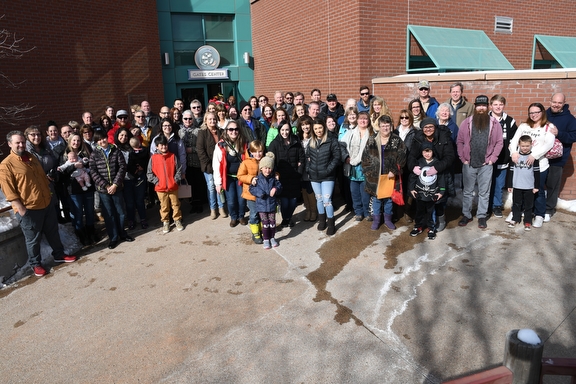 Advocates for Life[/caption]
Advocates for Life[/caption]
Q: How can I get involved with Donor Alliance?
A: If you’re looking for a way to give back or volunteer your time, we’d love to have you join the 200 volunteers from Colorado and Wyoming in our Advocate for Life program. Advocates for Life are essential partners in raising awareness about organ and tissue donation. While a variety of volunteer opportunities are available, the key role of our Advocates is to educate and inspire the public to better understand and support donation. Interested in volunteering but not sure if you should dive into the full program just yet? Come out and help at the Donor Dash! Volunteering at the Donor Dash is a fun way to give some of your time while you decide if you’d like to join the program. Annually, we participate in parades throughout Colorado and Wyoming. If you and your family would like to walk to spread awareness, you can always view a list of our events. Be sure to also follow us on social (Colorado, Wyoming) for the latest volunteer opportunities.
[caption id="attachment_25698" align="alignright" width="450"]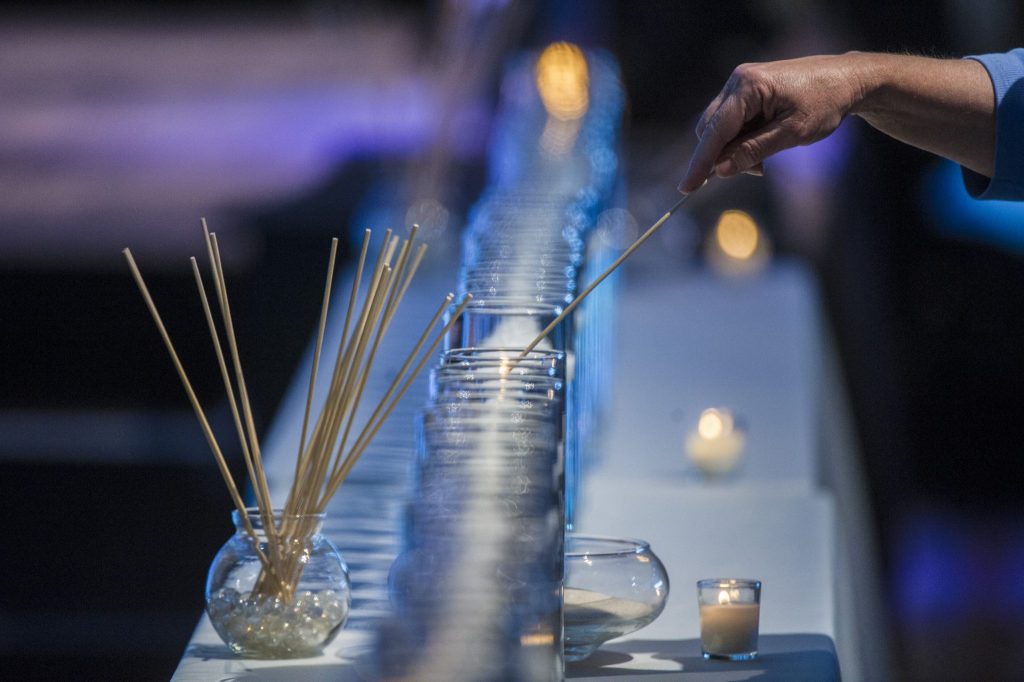 Donor Family Tribute[/caption]
Donor Family Tribute[/caption]
Q: What Donor Alliance events can donor families attend?
A: Donor Family Tribute: Every year in Colorado and every other year in Wyoming, Donor Alliance hosts the Donor Family Tribute. This event recognizes and honors the families of those who have given the gift of organ and tissue donation. This memorable event, themed Lives Transformed, enables reflection on those lost and offers hope for new life that comes as a result of organ and tissue donation.
Donor Dash: Come celebrate the gift of life with us at the Donor Dash. The 21st Annual Donor Dash will be held on Sunday, July 19, at Denver’s Washington Park. There are several ways that Donor Alliance donor families can honor their loved one who was an organ, eye and tissue donor at the Donor Dash. One way is to have a sign featuring a picture of their loved one in the Memorial Garden at the event. The Memorial Garden is a quiet space where families can visit their loved one’s sign before or after the race.
Wyoming Scavenger Hunt: The annual Donate Life Wyoming Scavenger Hunt aims to honor the lives of organ and tissue donors, celebrate the lives of transplant recipients and recognize those who continue to wait for a lifesaving transplant. Donor families are welcome to attend and honor their loved one with an ornament in our Donate Life Forest. This special place honors those connected to organ, eye and tissue donation; donors, recipients, living donors and wait list candidates.
[caption id="attachment_23013" align="alignright" width="450"]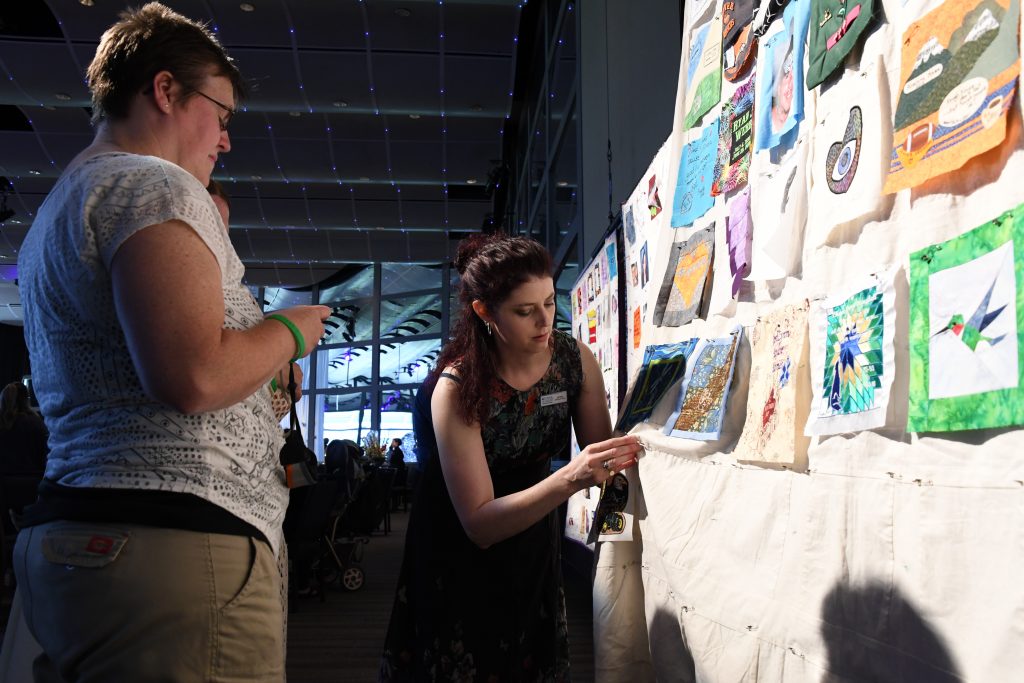 Donor Family Quilt[/caption]
Donor Family Quilt[/caption]
Q: How can I honor my loved one’s gifts?
A: Donor Family Quilt Project: Donor Alliance donor families can create a quilt square in honor of their loved one, which will be sewn into a larger quilt and displayed at various events and gatherings across Colorado and Wyoming. Download a quilt square template and release form.
Forever Generous Suncatcher: Made of recycled glass, this 4¼ inch suncatcher can be displayed as a reminder that your loved one will always be: “Forever Generous through Donation.” Fill out the form to request a suncatcher.
Donor Memory Cards: Donor Alliance donor families can submit their loved one's photos and a poem, quote or prayer to create a memory card in their loved one’s honor. Find out more information about the special memory cards.
Q: Does Donor Alliance provide grief counseling?
A: While Donor Alliance does not facilitate grief counseling, we can provide you with information and tools to help find grief support for you or someone in your family. You can request these grief resources at any time.
This post is the final part in our three-part “Aftercare” series. If you haven’t already, give post one, “Resources for Donor Families,” and post two, “Connecting Donor Families & Recipients” a read. For more information and more aftercare resources, please visit the donor family resources page. If you haven’t already, we encourage you to sign up to be an organ, eye and tissue donor any time on our websites: DonateLifeColorado.org or DonateLifeWyoming.org.
Are there more common questions from donor families you like to see answered? Let us know!